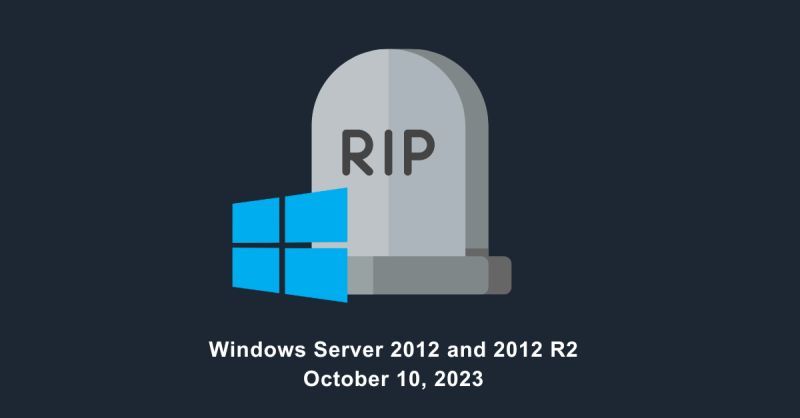Windows Server 2012 is a Windows Server operating system released by Microsoft in 2012. It is the successor to Windows Server 2008 R2 and the predecessor to Windows Server 2012 R2. Windows Server 2012 reached end of support on October 10, 2023. This means that Microsoft will no longer provide security updates, non-security updates, bug fixes, technical support, or online technical content updates for this product after that date.
Despite reaching end of support, Windows Server 2012 is still a relevant option for many organizations. It is a robust and reliable operating system that can be used to run a wide variety of workloads, including file and print servers, web servers, and application servers.
Here are some of the benefits of using Windows Server 2012:
- It is a stable and reliable platform. Windows Server 2012 has been around for over a decade and has been extensively tested and proven.
- It is compatible with a wide range of hardware and software. Windows Server 2012 can be run on a variety of hardware platforms, including physical servers, virtual machines, and cloud-based instances. It is also compatible with a wide range of software applications, including both Microsoft and third-party applications.
- It is relatively easy to manage. Windows Server 2012 includes a number of features that make it easy to manage, including the Server Manager console and the Windows PowerShell scripting language.
When to Consider Upgrading from Windows Server 2012
There are a few reasons why you might want to consider upgrading from Windows Server 2012:
- To improve security. Windows Server 2012 is no longer receiving security updates from Microsoft. This means that your servers are more vulnerable to cyberattacks.
- To take advantage of new features and functionality. Windows Server 2019 and Windows Server 2022 include a number of new features and functionality that can help you modernize your IT infrastructure.
- To take advantage of hardware innovations. Newer hardware platforms offer a number of advantages over older hardware platforms, such as improved performance and scalability.
How to Upgrade from Windows Server 2012
If you decide to upgrade from Windows Server 2012, there are a few things you need to do to prepare:
- Back up your data. This is the most important step, as you don’t want to lose any data during the upgrade process.
- Check your hardware compatibility. Make sure that your hardware is compatible with the version of Windows Server that you are upgrading to.
- Test your applications. Make sure that your applications are compatible with the version of Windows Server that you are upgrading to.
Once you have prepared your environment, you can begin the upgrade process. There are a few different ways to upgrade from Windows Server 2012:
- In-place upgrade. This is the simplest way to upgrade. You can upgrade your existing Windows Server 2012 installation to Windows Server 2019 or Windows Server 2022.
- Migration. This is a more complex process, but it gives you more flexibility. You can migrate your data and applications from your Windows Server 2012 server to a new Windows Server 2019 or Windows Server 2022 server.
Additional Considerations
In addition to the above, here are some other things to consider when deciding whether or not to upgrade from Windows Server 2012:
- Cost. Upgrading to a newer version of Windows Server can be expensive, especially if you need to purchase new hardware.
- Downtime. Upgrading to a newer version of Windows Server can cause downtime for your applications and services.
- Complexity. Upgrading to a newer version of Windows Server can be a complex process, especially if you have a large and complex IT environment.
